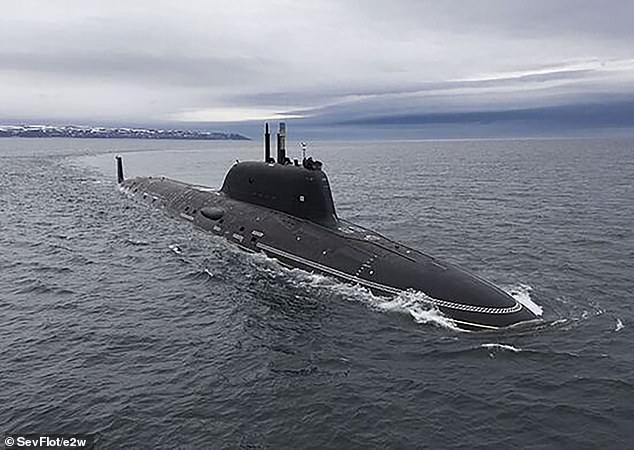Russian warships are practicing using high-precision weapons in the Atlantic Ocean, the Russian Defense Ministry said Tuesday, putting the United States on alert.
Vladimir Putin’s most modern frigate, the Admiral Gorshkov, a carrier of hypersonic missiles, accompanies the Kazan nuclear submarine and two other warships.
The exercises involve attacking targets from a distance of more than 600 kilometers, Russia’s Defense Ministry said in a statement, and follow an anti-aircraft fire exercise.
The four ships will arrive in Havana on Wednesday and will pass within 40 kilometers of the United States coast on their journey, according to reports.
The flotilla is seen as saber rattling by the Russian dictator at a time of deep tension over his war against Ukraine, and recalls the days of the Cold War and the Cuban missile crisis, when the United States confronted Cuba and the USSR.
Russian warships are practicing using high-precision weapons in the Atlantic Ocean, the Russian Defense Ministry said Tuesday, putting the United States on alert. Pictured: The Russian submarine Kazan Yasen-M, part of the Northern Fleet, heading to Cuba.
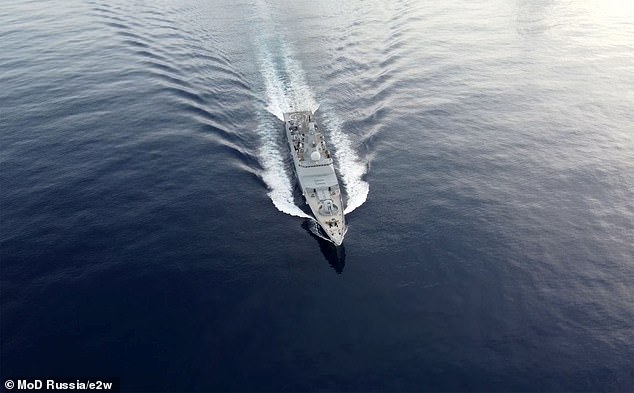
Vladimir Putin’s most modern frigate, the Admiral Gorshkov (pictured), a carrier of hypersonic missiles, accompanies the Kazan nuclear submarine and two other warships.
OSINT analysts highlighted a U.S. Boeing P-8 Poseidon maritime patrol and reconnaissance aircraft monitoring an area of sea roughly equidistant between the U.S. and the Bahamas, likely the location of Putin’s warships.
Russian pro-war Telegram channels have boasted that the Kazan nuclear submarine carries “guided missile weapons” on board as it passes near the US coast, about 40 miles east of Florida.
Cuban officials denied that Russian ships carry nuclear missiles.
However, Putin recently threatened to supply his most powerful weapons to countries or regions close to his NATO enemies, in what he sees as a tit-for-tat between the United States, Britain and France supplying Kiev with missiles to be used. by Ukraine on its territory.
Despite this, both the Admiral Gorshkov and the Kazan are typically key vessels in Putin’s nuclear strike force.
Russia has not declared what firepower its flotilla carries.
The other two vessels are the oil tanker Pashin and the rescue tug Nikolay Chiker.
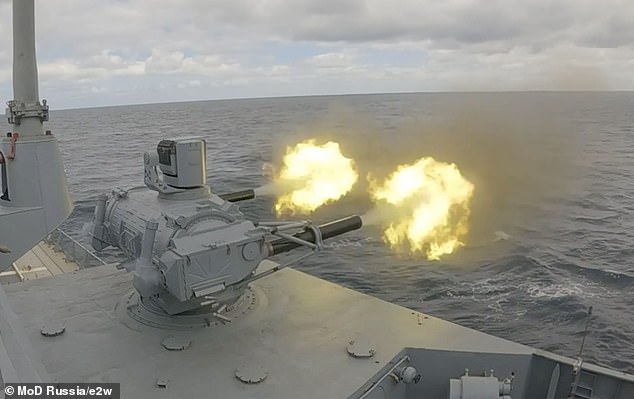
The Russian frigate Admiral Gorshkov is seen firing its weapons in a Russian naval exercise.
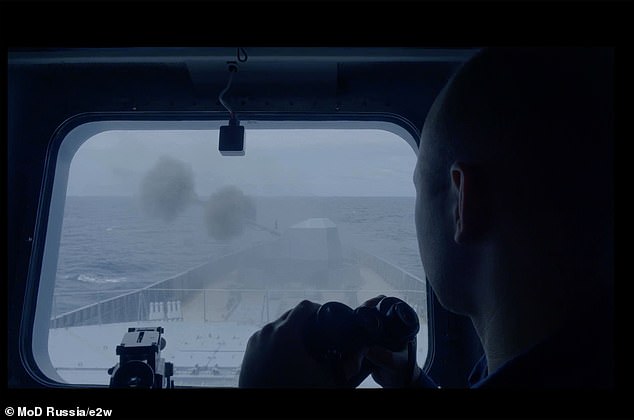
A Russian sailor looks out a window as the Russian frigate Admiral Gorshkov fires its first weapons during a naval exercise, in images released by the Russian Defense Ministry.
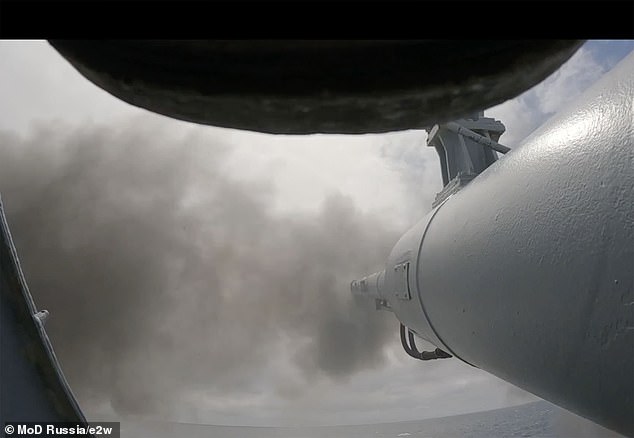
Footage shows a gun being fired at the Admiral Gorshkov frigate during Russian naval exercises.
During war exercises in the Atlantic, Admiral Gorshkov “defended the ships of the Northern Fleet from air strikes and anti-ship missiles of the conditional enemy.”
These exercises were carried out with the help of computer simulation, the Russian Defense Ministry reported.
The simulated targets were attacked with the Poliment-Redut SAM system, the A-192M shipborne artillery system and the Palash anti-aircraft system.
Russia and Cuba previously announced that Russian ships would be in Cuba from June 12 to 17.
The two countries have shared close ties since the days of the Soviet Union, first establishing diplomatic relations after the 1959 Cuban Revolution.
As communist states, Cuba and the USSR were seen as the antithesis of the capitalist United States at the time when Washington and Moscow were embroiled in the Cold War.
In 1961, the United States led a failed attempt to invade Cuba and overthrow its government (known as the Bay of Pigs invasion), further deepening the rift between the United States, the USSR, and the Cuban government.
Relations deteriorated further during the Cuban Missile Crisis, a 13-day standoff between the United States and the Soviet Union in October 1962.
The crisis saw American deployments of nuclear missiles in Italy and Turkey accompanied by Soviet deployments of nuclear weapons in Cuba.
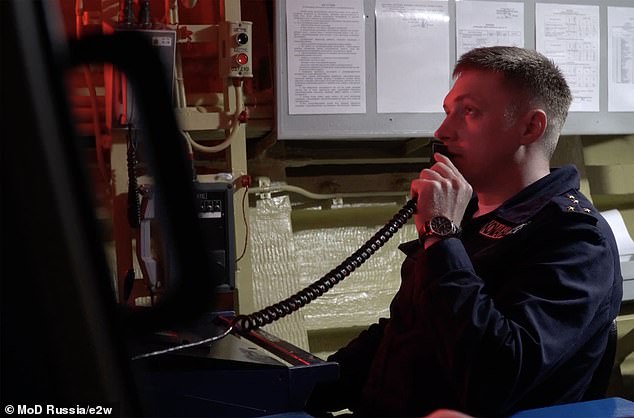
A sailor is seen aboard the Admiral Gorshkov at Russian naval exercises.
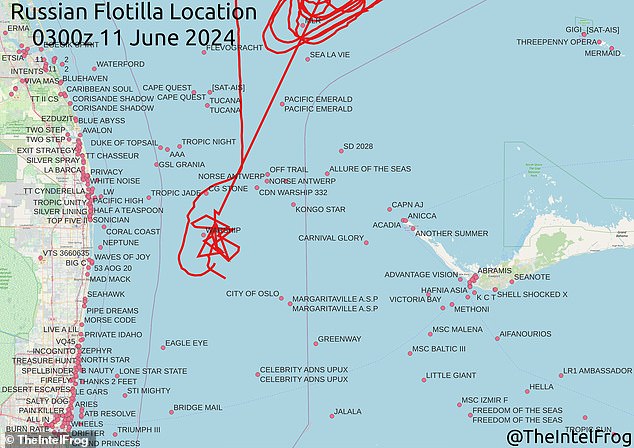
The four ships will arrive in Havana on Wednesday and will pass within 40 kilometers of the United States coast on their journey, according to reports. Pictured: A map released by OSINT analysts showing the suspected location of the Russian vessels as they passed between the United States (to the west) and the Bahamas (to the east).
The crisis is widely seen as the closest the Cold War came to becoming a full-blown nuclear war, and perhaps the closest the world has come to total nuclear annihilation.
Since then, the relationship between the United States and Cuba has softened.
Diplomatic relations, severed in 1961, were reestablished for the first time on July 20, 2015, and each country has an embassy in their respective capitals.
The United States continues to maintain a commercial, economic and financial embargo against Cuba, making it illegal for American corporations to do business with the country.


